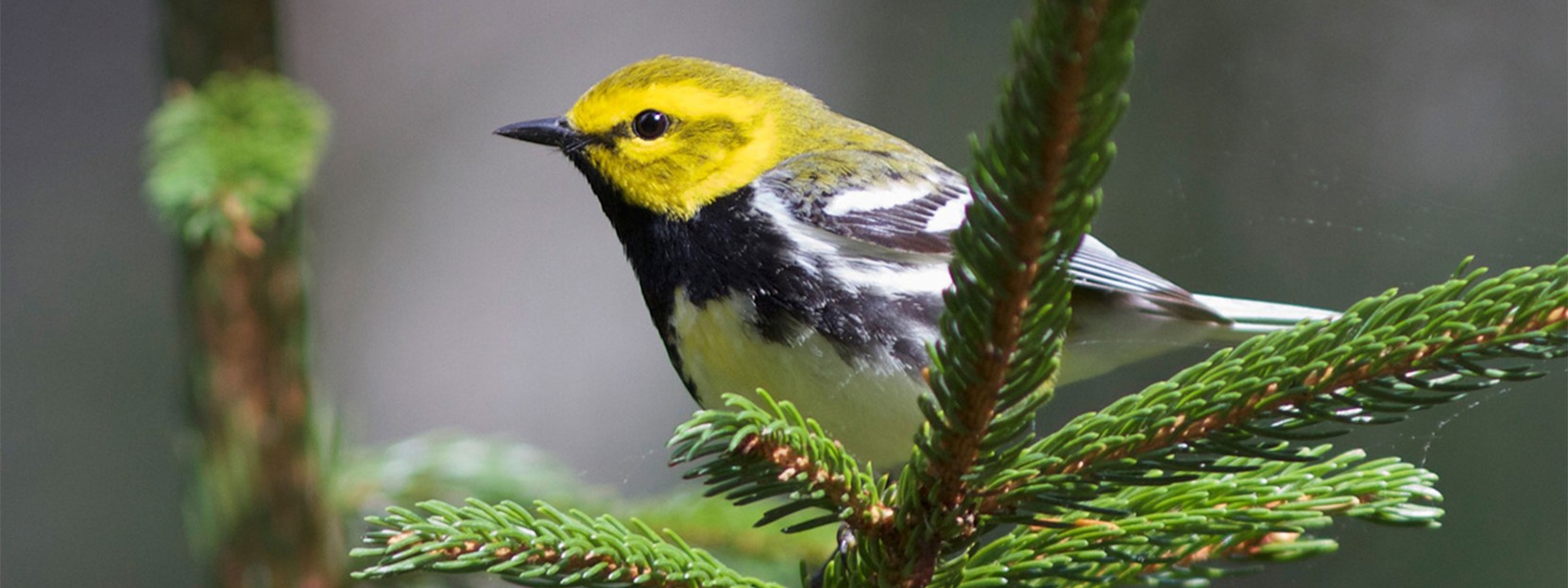Birding Basics
How to start a new hobby that lasts a lifetime.
4 Min. Read | Home & Backyard
Birding is enjoyed around the world by people of all ages. It’s relaxing, engaging and helps us easily connect to the outdoor world around us. You can do it most anywhere, including your backyard, local park or even from the comfort of your favorite window – and it doesn’t cost much more than a pair of decent binoculars. So, whether you’re an aspiring first-time birder or have been winging it for a while, this guide has everything you need to get started – including some expert tips from Doug Hitchcox, staff naturalist with our partners Maine Audubon.
Find the Right Binoculars
Binoculars are an essential tool for birding. They allow you to get an up-close view so you can observe our fine feathered friends from a comfortable distance, without disturbing their natural habitat or interactions. However, finding the right pair can be confusing if you don’t know what you’re looking for. So, consider some of these questions before you grab yours. How often do you plan on birding? Are you traveling with them? How’s your eyesight (do you wear glasses)? Knowing the answers to these questions is the first step to determining the right kind of binoculars for you. The second step? Understanding binocular numbers and specs. Don’t worry, it’s much easier than it seems.
Each pair of binoculars has a set of numbers associated with them that can tell you everything you need to know. For example, a pair of 10x42 binoculars means that pair has a magnification power of “10,” so things will appear 10 times closer. The second number, “42,” indicates the size of the lenses, which in this example would be 42 millimeters. Bigger lenses typically mean more light and better viewing, but it also means heavier binoculars – something to consider if you are holding them for long periods of time or carrying them far distances. Depending on the different lens size, magnification power and other features, birding optics come in a variety of prices. Understanding your needs and the specs will help guide you to the right pair at the right price.

Expert Tip
Practice with your binoculars: For being a simple tool, binoculars can be hard to use. Practice finding the right focus quickly by looking at both stationary and moving items, like the moon, or planes in the sky.
Find Your Lookout Patch
Some of the best birding locations are near water or in open green spaces with plenty of trees, but it may not always be possible to get there. So when searching for your birding spot, find one that is most comfortable. If you don’t want to go too far from home, a local park is a great place to set up watch. If you’re feeling adventurous, national parks have a wealth of amazing birdlife to discover. Finding a national park near you is easy, but you may also want to consider exploring other national parks around the country where you’ll be introduced to new and different species you won’t find in your area. Did someone say road trip? As always, remember to check the park’s website to plan your visit.
Of course, getting away or out of the house isn’t that easy for everyone. If that’s the case, you can always pick a good spot in your backyard or set up a comfy chair by a window and observe the birds that stop by. And if you can’t make it outside and don’t have a backyard or a good view from your window, you can always go virtual birdwatching. It’s a great way to get to know lots of different birds from the safety and comfort of home.

Expert Tip
Nothing beats time in the field: It is said we only remember about 10% of what we read, so while studying your field guide is important, it can’t compare to the 75% retention rate you get from actual birding. You can listen to recordings over and over, but seeing a bird sing will help cement it into memory.
Connect with the Birding Community
They say birds of a feather flock together. This has never more true when it comes to bird lovers. The birding community is a group of fun, friendly people of all ages who are happy to offer help for beginners. There are numerous groups, associations and websites where you can get advice on birding techniques, gear, best birding locations, as well as a place to share sightings, viewings and other stories. L.L.Bean partner, Isaiah Scott, has some great birding tips and reflections to share. You can also join local groups for special birding events and outings where you can get to know other birdwatchers in your area. And don’t forget to check out all of the incredible birding tours and courses L.L.Bean Outdoor Discovery Programs have to offer.
Know Your Habitat (and Theirs)
Birds may be all around us, but that doesn’t mean you don’t need to do a little research into the kinds that live in or visit your area. The enjoyment you’ll get from watching birds is great, but when you know what kind of species you’re looking at and some of their characteristics, birding reaches a new level of satisfaction. In addition to enriching your experience and knowledge of certain species, understanding the types of birds in your area can help ensure you are always respecting their habitat (and other animals) with little or no impact.
There are many field guides and birding books out there to help you identify birds and the areas you’ll typically find them. You can also search online to find the types of birds in your area and other helpful information like pictures, details about their behavior and important guidelines for birding responsibly.

Expert Tip
Start simple: Identifying very specific species can be hard and discouraging for beginners. As you get started, try learning the basic differences between warblers, sparrows, starlings and other bird families. Once you learn those, you can start expanding your knowledge of specific species-level identifications.
Set Personal Goals
While observing birds in their natural environment is usually all the motivation you need to go birding, adding personal goals can add another layer of excitement to the activity. Tracking your progress using birdwatching checklists and birding journals are a great way to enhance the hobby. Plus, if you’re looking for a challenge, every region has a few elusive birds that aren’t easily found. Make it your goal to be one of the first to find and identify one.

Expert Tip
Beware of optical illusions: Some would say “seeing is believing”, but sometimes you shouldn’t trust your eyes. There are several optical illusions that can throw off your ability to identify a bird: A hawk soaring over the tree line can look larger than that same bird (at the same distance) soaring in the sky. Shadows can make colors look “wrong” and many birds have iridescent feathers that change just by the angle of the light source.
Take It All In
Believe it or not, birding is not all about the birds. It’s much more than that. Learning to be patient and observe what’s happening in nature has a way of tuning all of your senses, making you much more aware of the sounds, smells and things happening around you. After a few sessions of birdwatching, you may realize you’re not just watching the birds, you’re watching the entire world come alive in front of you.
Related Stories











